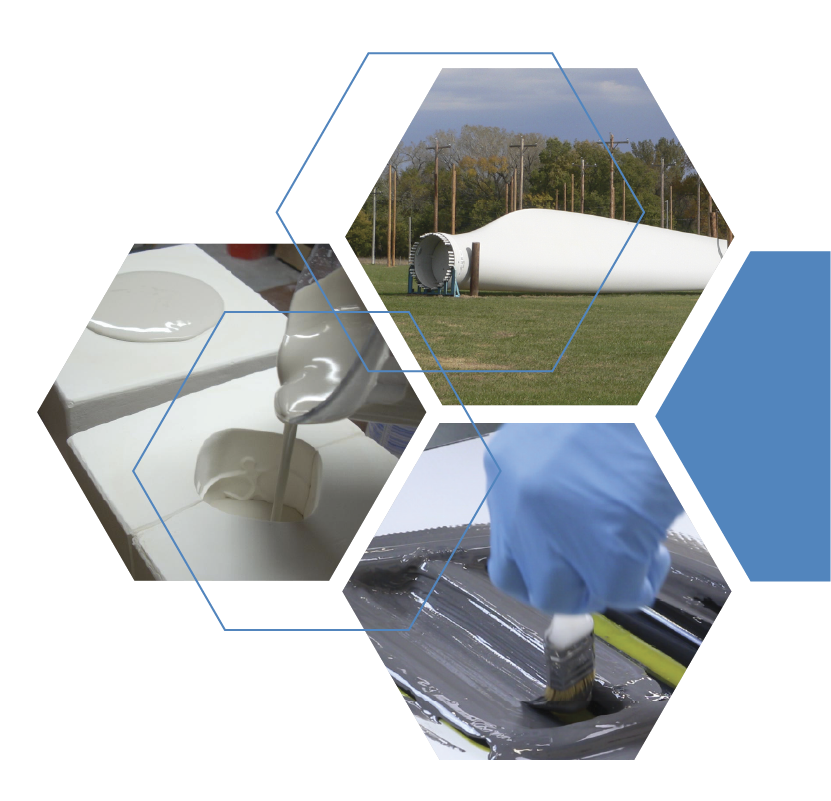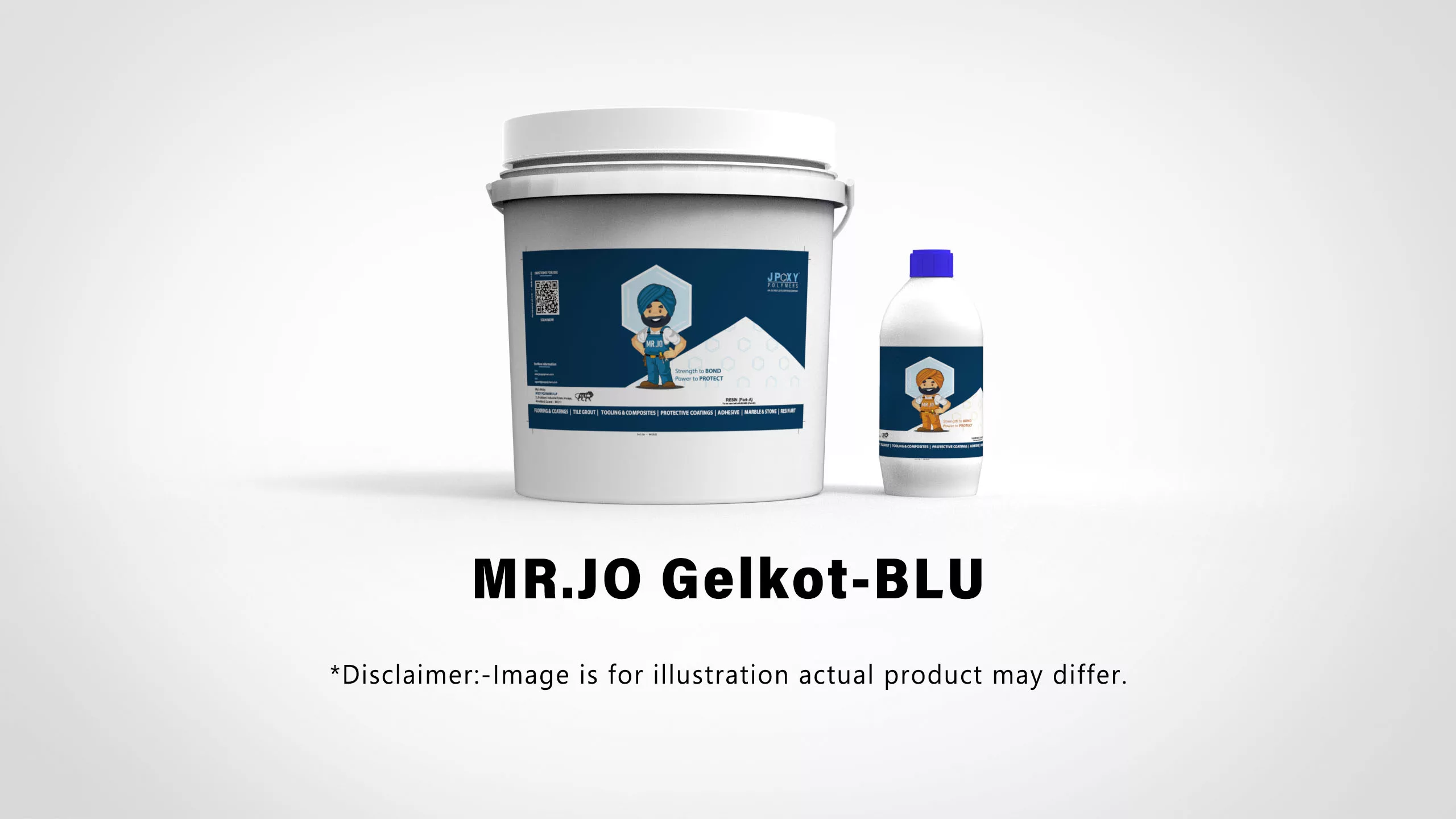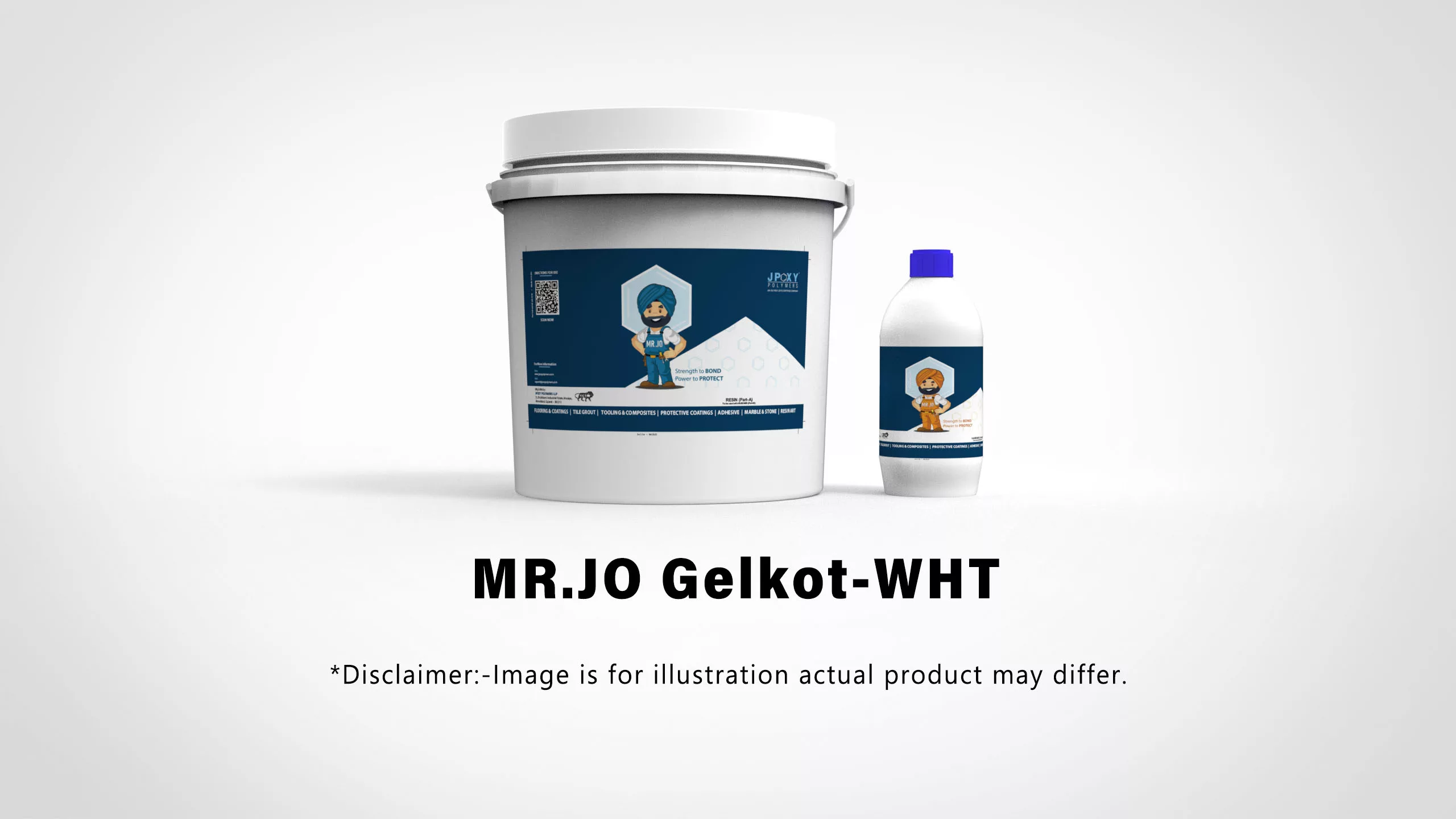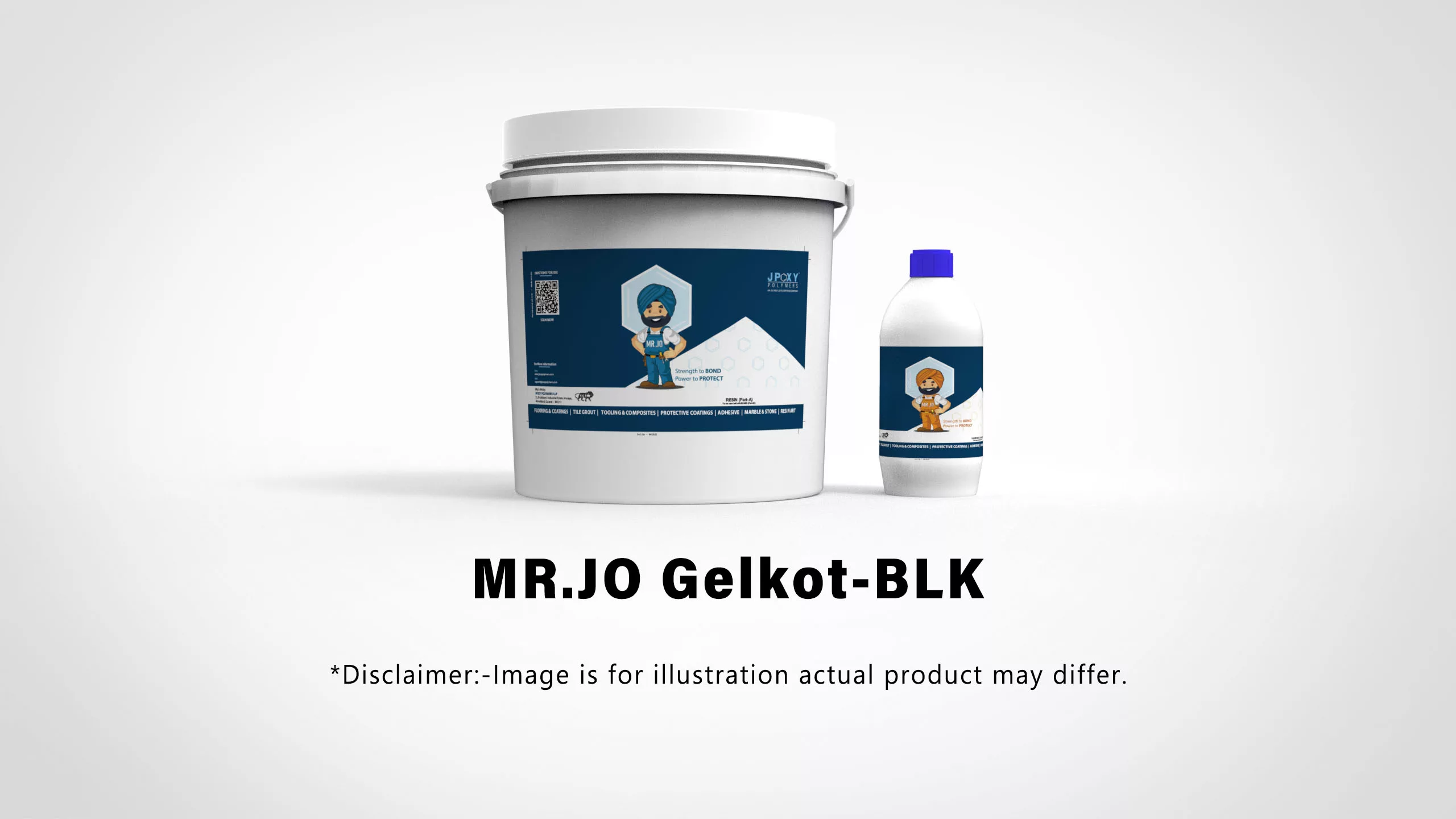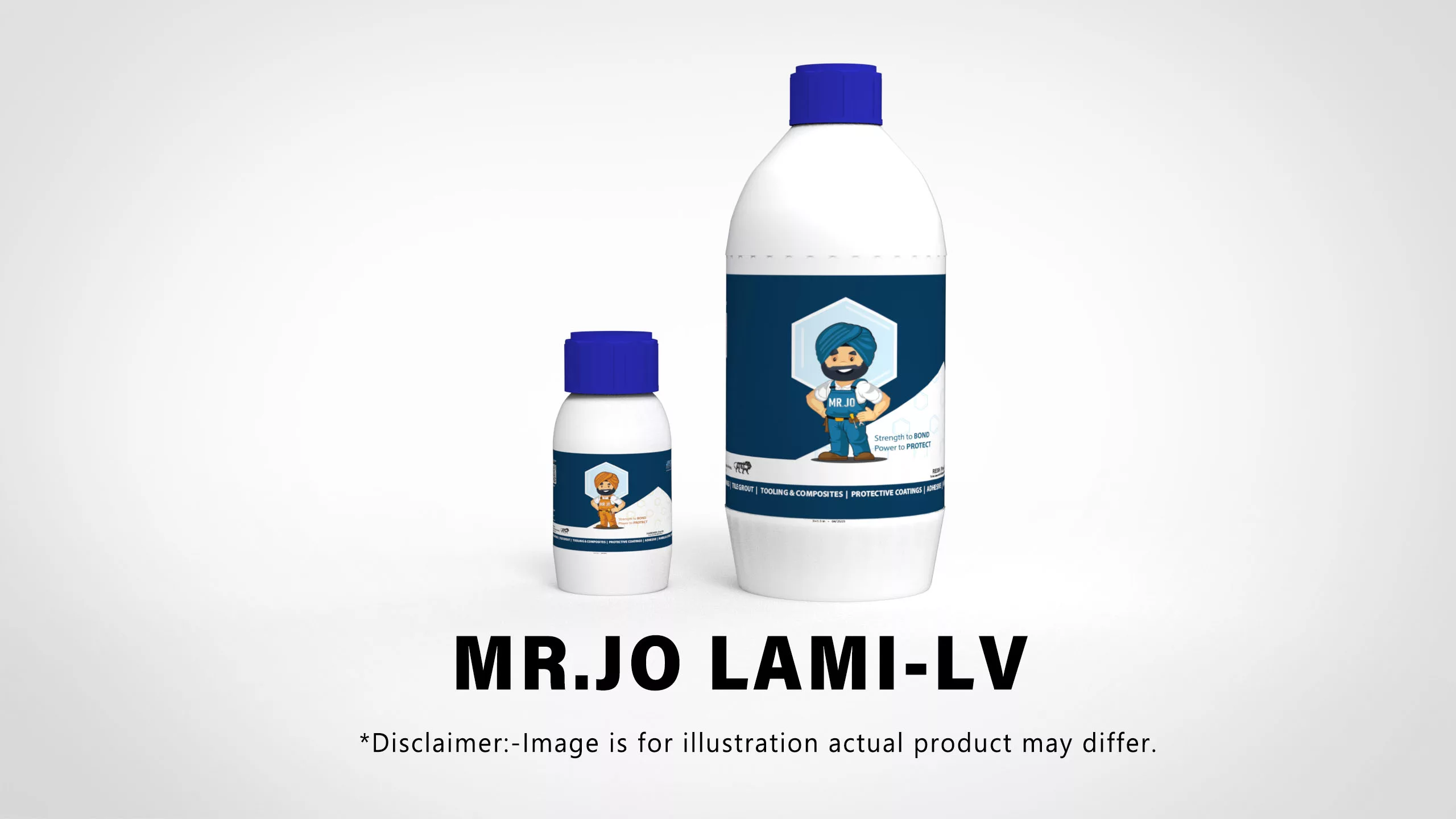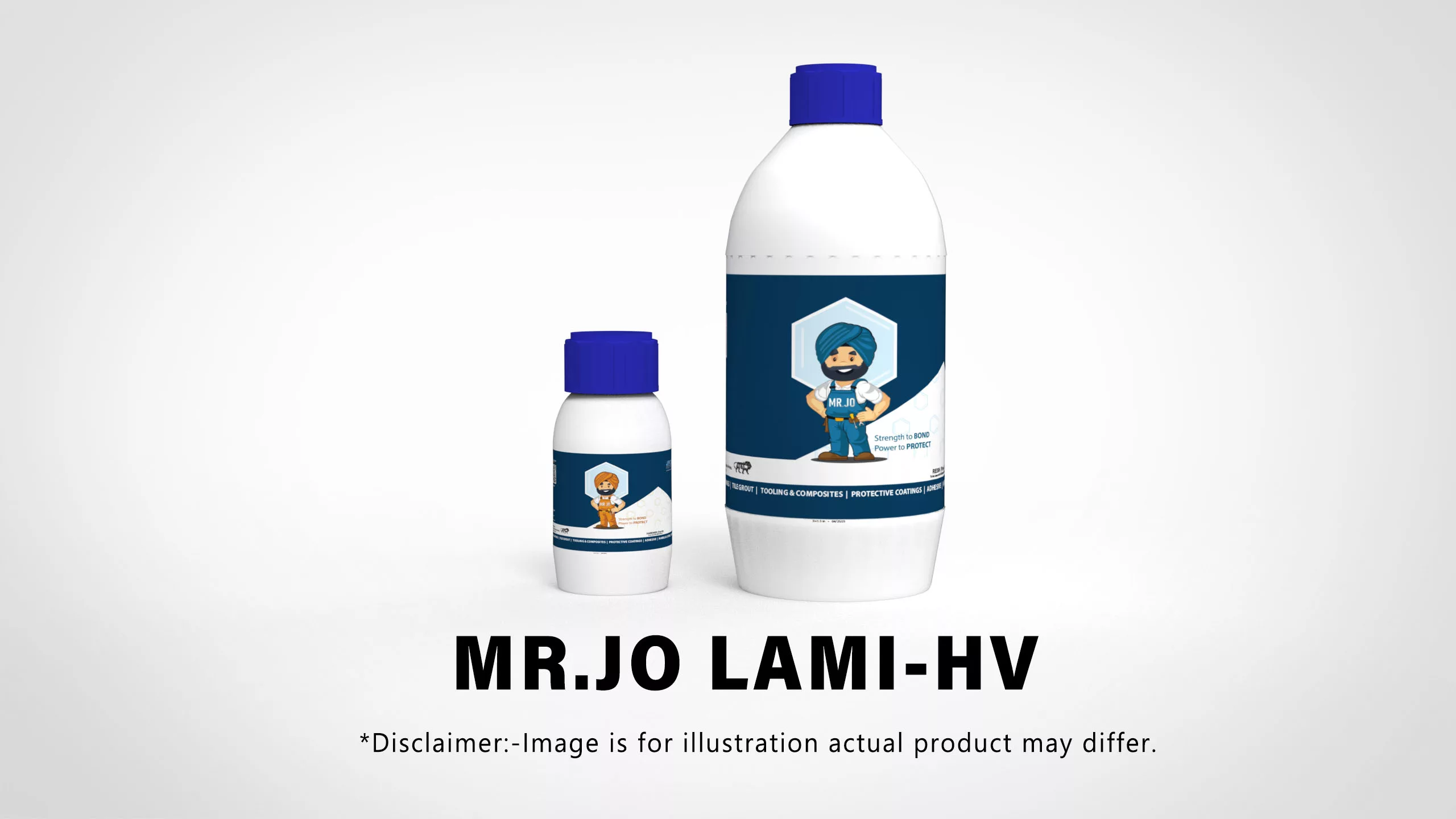Our Products
MR. JO Gelkot-BLU
System Properties
- Color: Blue
- Pot life @25°C: 20-30mins
- Mixing Ratio: 100:14 PBW
- Mixture consistency: Thixotropic Blue paste
- Optics: Opaque
Applications
- Working model for ceramic industry
- Gelcoat
- Negative & laminating molds
- Foundry patterns
How to use
-
Surfaces should be freed from laitance and dust by sand-blasting. In case sand-blasting is not possible, thorough abrading with a hard wire brush should be preferable. Suitable degreasing agent should be used to remove any grease, oil or traces on the surface.
-
Mix the two components together thoroughly in small quantity for at least 2 minutes so as to achieve uniform mixing and thorough consistency of the mix.
-
Apply mould releasing agent on the surface of the mould and then apply 2 – 3 coats of the gel coat, allow it to cure.
MR. JO Gelkot-WHT
System Properties
- Color: White
- Pot life @25°C: 20-30mins
- Mixing Ratio: 100:14 PBW
- Mixture consistency: Thixotropic white paste
- Optics: Opaque
Applications
- Working model for ceramic industry
- Gelcoat
- Negative & laminating molds
- Foundry patterns
How to use
-
Surfaces should be freed from laitance and dust by sand-blasting. In case sand-blasting is not possible, thorough abrading with a hard wire brush should be preferable. Suitable degreasing agent should be used to remove any grease, oil or traces on the surface.
-
Mix the two components together thoroughly in small quantity for at least 2 minutes so as to achieve uniform mixing and thorough consistency of the mix.
-
Apply mould releasing agent on the surface of the mould and then apply 2 – 3 coats of the gel coat, allow it to cure.
MR. JO Gelkot-BLK
System Properties
- Color: Black
- Pot life @25°C: 20-30mins
- Mixing Ratio: 100:16 PBW
- Mixture consistency: Thixotropic black paste
- Optics: Opaque
Applications
- Working model for ceramic industry
- Gelcoat
- Negative & laminating molds
- Foundry patterns
How to use
-
Surfaces should be freed from laitance and dust by sand-blasting. In case sand-blasting is not possible, thorough abrading with a hard wire brush should be preferable. Suitable degreasing agent should be used to remove any grease, oil or traces on the surface.
-
Mix the two components together thoroughly in small quantity for at least 2 minutes so as to achieve uniform mixing and thorough consistency of the mix.
-
Apply mould releasing agent on the surface of the mould and then apply 2 – 3 coats of the gel coat, allow it to cure.
MR. JO Lami-LV
System Properties
- Color: Clear
- Pot life @25°C: 100-150mins
- Mixing Ratio: 100:10 PBW
- Mixture consistency: Low Viscous liquid
- Optics: Transparent
Applications
- Glass fiber laminates
- Lamination tools
- Composites
How to use
-
Surfaces should be freed from laitance and dust by sand-blasting. In case sand-blasting is not possible, thorough abrading with a hard wire brush should be preferable. Suitable degreasing agent should be used to remove any grease, oil or traces on the surface.
-
Mix the two components together thoroughly for at least 2 minutes so as to achieve uniform mixing and thorough consistency of the mix.
-
Lay the 100-650 gsm of glass fiber/carbon fiber on the surface to be covered, apply 2 or 3 coats of the mixture again. The laminating resin can be poured directly from the mixing can onto the fiberglass/carbon fiber and spread around with the paint roller/brush.
-
Allow it to cure for the given cure time to get the desired results.
MR. JO Lami-HV
System Properties
- Color: Clear
- Pot life @25°C: 100-150mins
- Mixing Ratio: 100:10 PBW
- Mixture consistency: Medium Viscous liquid
- Optics: Transparent
Applications
- Industrial composites
- Structural Composites
- Glass fiber laminates
How to use
-
Surfaces should be freed from laitance and dust by sand-blasting. In case sand-blasting is not possible, thorough abrading with a hard wire brush should be preferable. Suitable degreasing agent should be used to remove any grease, oil or traces on the surface.
-
Mix the two components together thoroughly for at least 2 minutes so as to achieve uniform mixing and thorough consistency of the mix.
-
Lay the 100-650 gsm of glass fiber/carbon fiber on the surface to be covered, apply 2 or 3 coats of the mixture again. The laminating resin can be poured directly from the mixing can onto the fiberglass/carbon fiber and spread around with the paint roller/brush.
-
Allow it to cure for the given cure time to get the desired results.
 Ask Mr. Jo
Ask Mr. Jo